Corridor pygmy: content, breeding and compatibility
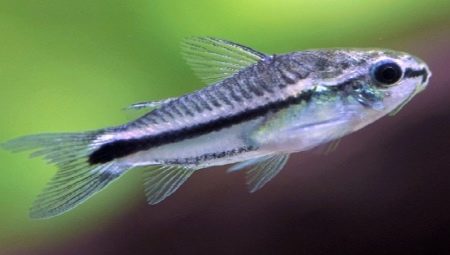
Aquarium catfish belong to the catfish family and the catfish order. These aquatic inhabitants are considered to be the oldest representatives of the freshwater fauna. They have 150 genera and about 1200 species. Catfish corridors belong to the armored catfish family. The smallest representatives of this genus are the pygmy corridor, dwarf corridor and habrosus.

Where do they live?
In the wild, the pygmy corridor is found in small tributaries almost throughout South America. These catfish swim in different waters and can change habitats during the rainy and dry seasons. Fish live in schools on a sandy or gravel bottom. But they can also live in flooded forests, where the bottom is covered with fallen leaves.
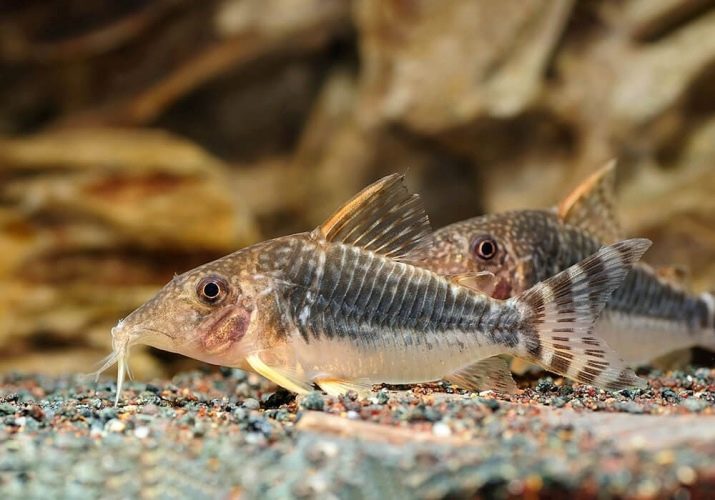
Features of appearance and behavior
Based on the name, it is clear that this catfish is characterized by a very small size. It has an elongated body shape, which is flattened from the sides and painted in a gray-olive color. A black stripe begins from the eyes and reaches the base of the tail, ending in an irregular spot. The fins are well developed and transparent, the tail is two-lobed. Females reach a length of about 3 cm and have a rounded upper fin, males are smaller - 2-2.5 cm, their upper fin is pointed.
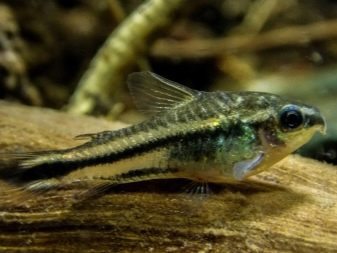
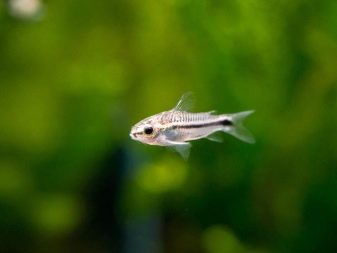
The pygmy corridor is a peaceful aquarium fish. It is recommended to acquire them only in flocks, as they are accustomed to living in a natural environment. A catfish will live much less alone than in a flock.
Pygmy corridors are shy, but they can swim not only near the bottom, but throughout the entire aquarium.
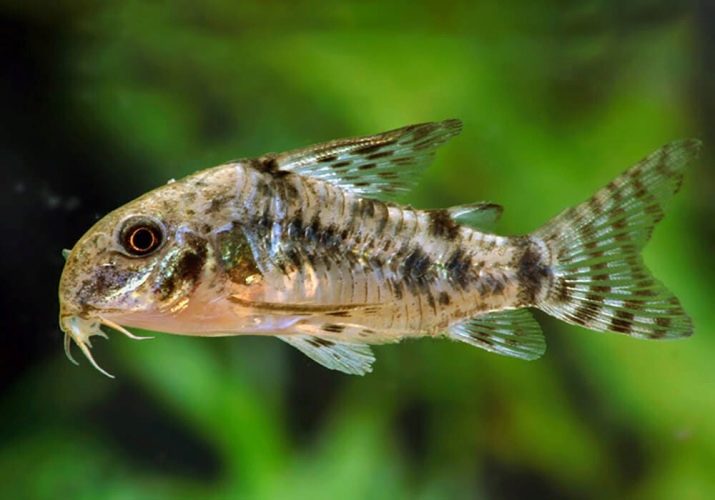
Home care
In order for the pygmy catfish to live in the aquarium as long as possible, the following content rules must be observed.
- Aquarium volume... When choosing an aquarium, it should be borne in mind that there should be 3 liters of water for 1 fish. A flock of 6-7 catfish will feel comfortable in a 20-liter container. If there are more pygmies, then an aquarium with a volume of at least 50 liters is required.
- Water temperature and composition. The optimal water temperature for this type of catfish is 22-25 degrees Celsius. The recommended acidity is 6.5-7.5 pH, and the hardness is not more than 15. Every week you should change 1/3 of all the water.
- Lighting. Pygmy corridors prefer soft, diffused light. It is desirable that it comes from above.
- Priming... It should be soft (sand or small pebbles) and not have sharp edges. Try to get a dark colored soil, as catfish will look more impressive against such a background.
- Equipment... Pygmy corridors do not absolutely need to install a compressor, since they have intestinal respiration, but there will be no harm from the unit either. But a good filter in such an aquarium is very necessary, because these fish greatly muddy the water, digging the ground.
- Plants. They should be planted so that the catfish can move freely. Plants with wide leaves are preferable: Echinodorus, Anubias, Cryptocoryne. Pygmies can lie on their large leaves.
- Decor. The corridors of the pygmies in the aquarium need many corners in the form of grottoes, caves, snags, where they can hide. Mounds of large smooth stones should also be placed. Small fish like to rest on such stones.
- Feeding. You need to give food once a day. Pygmies can be fed both live (daphnia, tubule, brine shrimp) and dry food in the form of flakes, granules, tablets. It is necessary to feed finely chopped fresh cucumber, lettuce and dandelion leaves, which must be scalded with boiling water and finely chopped.
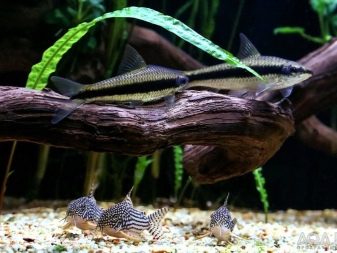

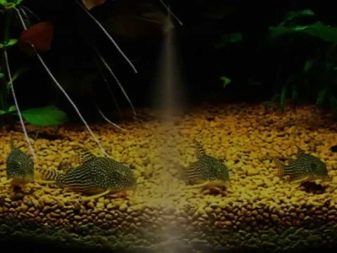
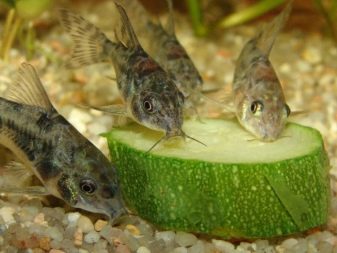
Reproduction
The beginning of spawning in the corridors of pygmies can be provoked daily change of water at a lower temperature. This is similar to natural conditions during the rainy season. Females and males are kept separate from each other and fed intensively with live food. For a spawning box, a 10 liter container is suitable.
You need to pour soft water into it, a few degrees cooler than in the main aquarium.
A special soil for spawning is placed at the bottom and fish are planted. The lighting should be dim, one wall can be made brighter and glass can be installed near it, on which the female will attach eggs. Parents after the end of spawning must be planted.
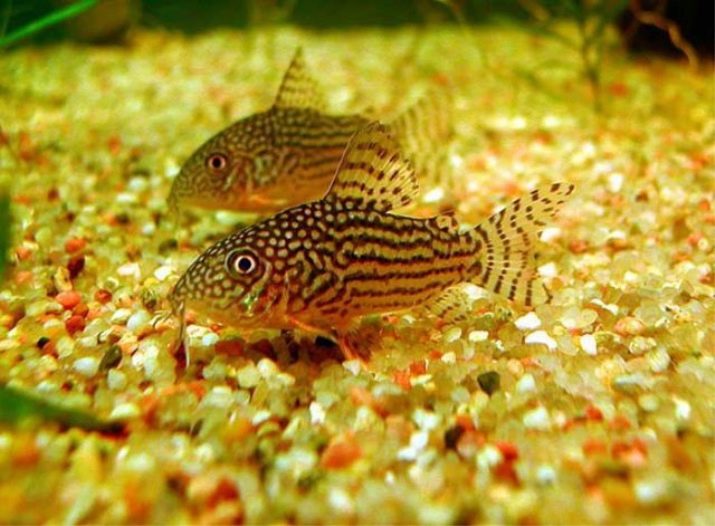
The larvae appear on the fourth day, and after 4 days they can swim and feed on their own. Fry should be given ciliates, egg yolk, live dust. Gradually they are taught to eat young brine shrimp. Then they switch to a more varied diet. At 4-8 months, the fish become sexually mature.
Co-location
In the aquarium, along with the corridors of the pygmies, it is best to keep small peaceful fish. The most suitable compatibility options are guppies, platies, iris, tetras. You can get snails and shrimps. Pygmy corridors are small and very unpretentious catfish. They easy to care for and breed, get along well with other peaceful fish. In addition, these catfish are an interesting observation, especially for children.
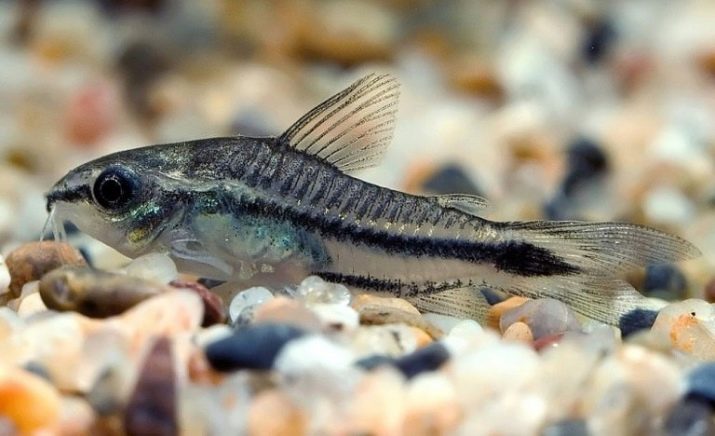
All about the pygmy corridor, see below.








